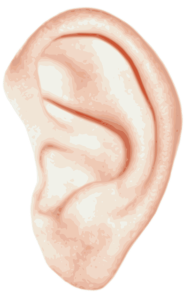What Is the Progression of an Acoustic Neuroma?
An acoustic neuroma (also known as a vestibular schwannoma) is a benign (non-cancerous) tumour that arises from the balance and auditory nerves that supply the inner ear. It normally grows slowly and does not create any symptoms.
The tumour is caused by an overabundance of Schwann cells, which are cells that generally surround nerve fibres and nourish and insulate neurons during normal activity.
Because it puts pressure on the hearing and balance nerves, an acoustic neuroma causes unilateral hearing loss, tinnitus (ringing in the ears), dizziness, and balance issues.
As it expands, it may impinge on the facial nerve (trigeminal nerve), causing facial numbness and tingling. It can also put pressure on the nerves that control the facial muscles, causing weakness or paralysis of the muscles on the side of the tumour where the tumour is located.
Vital functions may be jeopardised when big tumours push excessively on the brainstem and cerebellum.
One in every 100,000 people will develop an auditory neuroma at some point in their lives. Unilateral auditory neuromas account for about 8% of all tumours found inside the skull.
Symptoms can appear at any age, but they are most common between the ages of 30 and 60. Acoustic neuromas that grow on only one side of the body are not hereditary.
How Is It Determined If It Exists?
Early detection of an acoustic neuroma can be difficult because symptoms in the early stages of the disease are frequently modest if present at all.
Many middle and inner ear illnesses have symptoms that are similar to one another, making diagnosis challenging.
To make a valid diagnosis, a complete ear examination and hearing test (audiogram) is essential as soon as symptoms appear.
The use of computed tomography (CT) scans supplemented with intravenous contrast and magnetic resonance imaging (MRI) pictures are required for the early detection of acoustic neuroma.
These tests are useful in determining the location and size of the tumour and planning its removal via microsurgery.
What Are the Procedures for Treatment?
Early identification of an acoustic neuroma is crucial for preventing possibly fatal consequences. Radiation, surgery, and observation are the three treatment options for this illness.
Typically, the tumour is removed surgically. The sort of surgery needed will be determined by the size of the tumour and the amount of hearing remaining in the affected ear.
If the tumour is small enough, it may be possible to keep hearing while also treating the underlying symptoms. However, when the tumour grows in size, surgical removal becomes more difficult since the tumour may have harmed the nerves that control facial gestures, hearing, balance, and other brain structures, making removal more difficult.
If the tumour has damaged these nerves, surgical excision of the tumour may worsen the person’s symptoms since nerve segments may need to be excised as part of the surgical operation.
Fortunately, vestibular rehabilitation can help the central nervous system compensate for the loss of inner ear function in these cases.
Living with a balance problem has a number of effects on one’s life. Many once simple tasks have become difficult, if not impossible, to complete. Going to the mall, buying groceries, seeing a play, and seeing family can all feel like mountain climbs.
Furthermore, because your symptoms are invisible, your friends, family, and coworkers will have no idea what you’re going through and may even disbelieve that your symptoms are real.
The vestibular system is essential for the efficient operation of the human body. As a result, damage or illness to the vestibular system affects how you feel and how well you can perform your routine daily chores. It’s easy to become overwhelmed and bewildered while dealing with financial issues. The following are some tips for dealing with common events that may arise and cause your symptoms to flare up.
As an alternative to traditional surgical approaches, radiosurgery techniques such as the Gamma Knife or the linear accelerator can be used to minimise or control the growth of a tumour.
In some circumstances, radiation therapy is the preferred treatment option for old or unwell patients, as well as patients with bilateral acoustic neuroma (a tumour that affects both ears) or those whose tumour only affects one of their hearing ears.
Recurrent MRI scans to monitor tumour growth may be advantageous in some cases, particularly in older or ill patients.
Brought To You By – Microsuction Peterborough
The post What Is the Progression of an Acoustic Neuroma appeared first on https://gqcentral.co.uk



